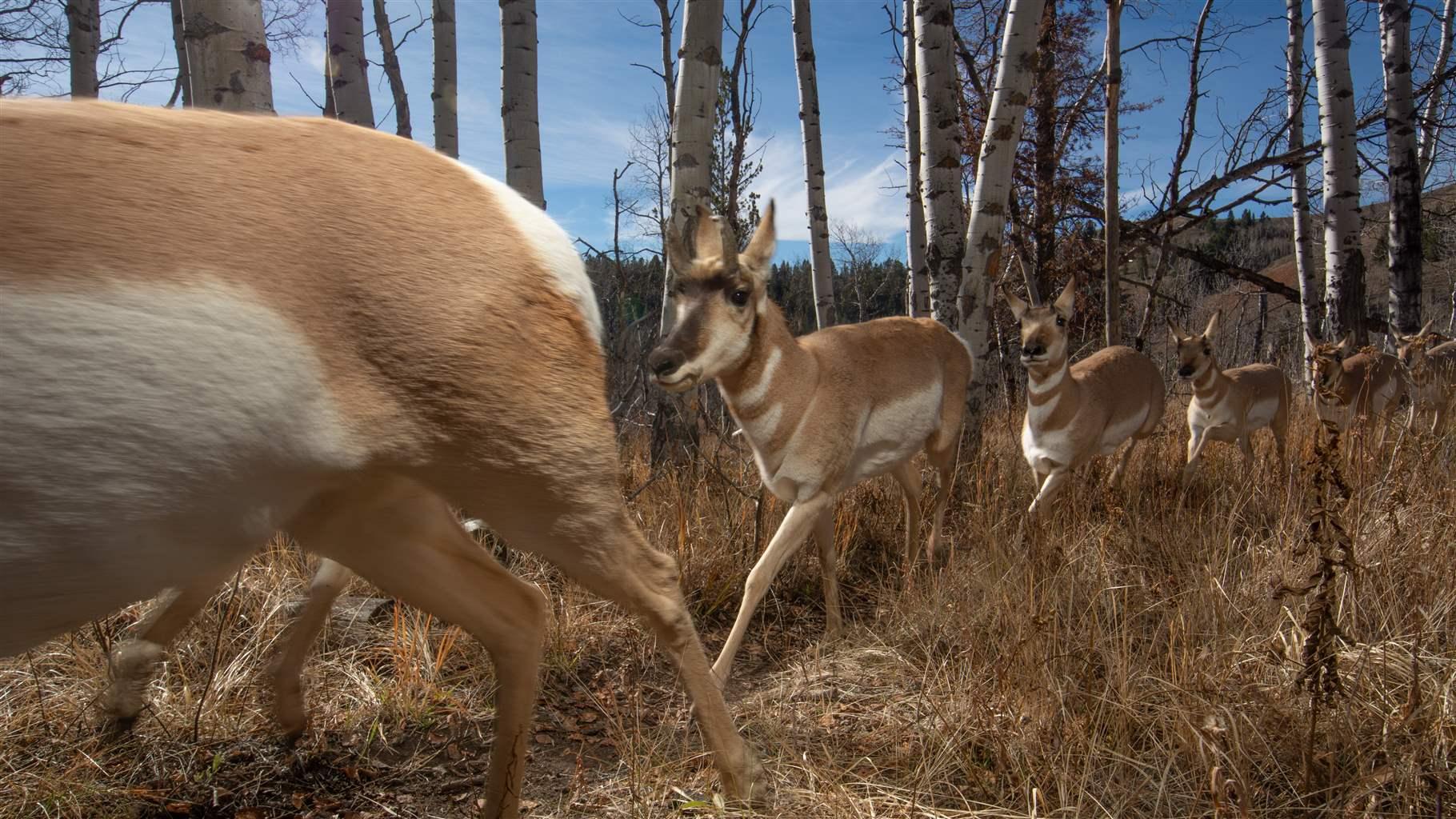A dog can run halfway into the woods before it starts running out. In the forest, dogs can only run deeper until they begin heading back.

Credit: revealnews.org
Understanding A Dog’s Natural Instincts
Dogs possess natural instincts that can lead them deep into the woods. They have an innate drive to explore, chase, and follow scents, making it difficult to determine just how far a dog can run into the woods.
Understanding a Dog’s Natural InstinctsDogs are fascinating creatures that possess a range of natural instincts. These instincts have been shaped through years of evolution and domestication. One of the most intriguing aspects of a dog’s natural instincts is their ability to navigate through the depths of a forest or wooded area. But how far can a dog run into the woods? To comprehend this, it is essential to understand the driving forces behind a dog’s behavior in such environments. Let’s delve into three key aspects: a dog’s scent-driven nature, their hunting and chasing behavior, and their territorial instincts.Scent-driven Nature
Dogs possess an extraordinary sense of smell, far superior to that of humans. Their noses are capable of detecting a plethora of scents that we could never fathom. This scent-driven nature is what makes dogs exceptional trackers, maneuvering effortlessly through the dense foliage of the woods. Dogs follow scent trails, allowing them to identify potential prey, mates, or even rivals. As they venture deeper into the woods, their olfactory abilities become their guiding compass, leading them further into the unknown.Hunting And Chasing Behavior
Hunting and chasing are innate behaviors deeply ingrained in a dog’s DNA. These instincts stem from their ancestral past as carnivorous predators. When let loose in the woods, a dog’s internal hunting mechanism is triggered. The rustling leaves, scurrying critters, and elusive prey stimulate their primal instincts, compelling them to give chase. Their agile bodies effortlessly navigate through the undergrowth, fueled by their insatiable drive to pursue. It is this innate need for the thrill of the hunt that propels dogs deep into the heart of the woods.Territorial Instincts
Dogs are instinctually territorial creatures, driven to protect and mark their territory. When they explore the depths of the woods, they feel a sense of ownership over their surroundings. This territorial instinct compels them to expand their boundaries, sniffing out potential threats and ensuring their presence is known. As dogs roam through the woods, they instinctively mark trees, bushes, and other elements with their unmistakable scent. By doing so, they assert their dominance and communicate their claim on the territory, often venturing further into the woods to extend their marked areas. In conclusion, a dog’s natural instincts have an undeniable influence on how far they can run into the woods. Their scent-driven nature, hunting and chasing behavior, as well as their territorial instincts, all contribute to their ability to navigate and explore the depths of the forest. By understanding and appreciating these instincts, we gain a deeper understanding of the fascinating world of dogs and the wonders they can unravel when surrounded by nature’s embrace.
Credit: www.pewtrusts.org
Physical Capabilities Of Dogs
Dogs possess remarkable physical capabilities, enabling them to run deep into the woods with ease. Their strong muscles, agile bodies, and keen senses make them well-equipped for navigating through dense forests.
Endurance And Stamina
Dogs are incredibly energetic creatures, able to cover long distances without tiring easily. Their remarkable endurance and stamina enable them to run deep into the woods and explore the surrounding environment. With their muscular build and efficient cardiovascular systems, dogs can keep going for extended periods of time, making them perfect companions for adventurous hikers or runners.Speed And Agility
One of the notable physical capabilities of dogs is their impressive speed and agility. Whether it’s a short sprint or a chase through the forest, dogs have the ability to maneuver quickly and effortlessly. Their flexible bodies and strong limbs allow them to navigate obstacles with ease, making them well-suited for navigating the diverse terrain of the woods. Their innate instinct to chase and capture prey further enhances their speed and agility.Terrain Adaptability
Dogs possess an exceptional ability to adapt to various terrains, making them highly versatile when it comes to venturing into the woods. Their paws are padded with thick, durable skin that provides protection against rough surfaces, sharp rocks, and thorny bushes. Additionally, dogs have well-developed muscles and joints that enable them to adapt to uneven ground and tackle steep inclines effortlessly. Their keen senses of smell and hearing also aid in navigating through dense vegetation, allowing them to track scents and detect potential dangers in the environment. In conclusion, dogs possess remarkable physical capabilities that enable them to run deep into the woods. Their endurance and stamina, combined with their speed, agility, and terrain adaptability, make them perfect companions for exploring the vast wilderness. Whether you’re looking for a companion on your hiking adventures or simply want to witness the awe-inspiring capabilities of these magnificent creatures, dogs are undoubtedly a force to be reckoned with in the great outdoors.Factors Limiting A Dog’s Distance In The Woods
Factors such as terrain, endurance, and training can limit a dog’s distance in the woods. Uneven ground, thick vegetation, and obstacles may also affect how far a dog can run into the woods. Age, breed, and physical condition can further play a role in determining a dog’s running ability.
Factors Limiting a Dog’s Distance in the WoodsTraining and Recall AbilitiesProper training is essential to ensure a dog’s safety and prevent them from straying too far into the woods. Dogs with excellent recall abilities are more likely to return to their owner when called, allowing them to explore a greater distance. Consistent training can help improve a dog’s recall, teaching them to respond promptly to commands and stay within a safe distance.Physical and Mental ExhaustionJust like humans, dogs can experience physical and mental exhaustion, especially during long walks or runs in the woods. Running for extended periods can tire out their muscles, leading to decreased endurance and the inability to cover as much ground. Additionally, dogs can become mentally fatigued by navigating through unfamiliar terrain and constantly processing new sensory information. As a result, their enthusiasm and energy may diminish, limiting the distance they can cover.Environmental HazardsThe woods can present various environmental hazards that can affect a dog’s ability to explore freely. These hazards include dense undergrowth, rough terrains, and obstacles such as fallen trees or streams. Dogs may not venture too far if the terrain becomes too challenging or risky to navigate. Moreover, certain wildlife or poisonous plants can pose a threat to a dog’s safety, potentially deterring them from venturing deeper into the woods. In conclusion, several factors can limit a dog’s distance in the woods. Training and recall abilities play a significant role in ensuring a dog stays within a safe range. Physical and mental exhaustion can cause dogs to tire out and cover less ground. Additionally, environmental hazards can deter them from exploring further. To keep our furry friends safe, it’s important to be aware of these factors and take appropriate measures to manage their distance when venturing into the woods.
Credit: www.newyorker.com
Frequently Asked Questions Of How Far Can A Dog Run Into The Woods
How Far Can You Walk Into Wood?
You can only walk halfway into wood because after that, you would be walking back out.
How Far Can A Dog Run Without Stopping?
A dog can run for several miles without stopping, depending on its breed, age, and fitness level. However, it’s essential to consider the dog’s stamina and physical condition to prevent overexertion and health issues. Regular breaks and adequate hydration are necessary during long runs to ensure the dog’s wellbeing.
How Far Can A Fox Run Into A Forest?
A fox can run into a forest as far as it wants, but it will always stop halfway because after that, it would be running out of the forest.
How Fast Can A Dog Run Long Distance?
A dog can run long distances at an average speed of 12 to 15 miles per hour, but some breeds, like the greyhound, can reach speeds of up to 45 miles per hour.
Conclusion
To sum up, a dog can run as deep into the woods as their adventurous spirit carries them. The extent of their exploration depends on factors like their stamina, curiosity, and surrounding dangers. As dog owners, it’s crucial to ensure their safety and be mindful of their limits.
Remember, keeping a watchful eye during outdoor adventures contributes to a happy and fulfilling experience for both you and your furry friend.



